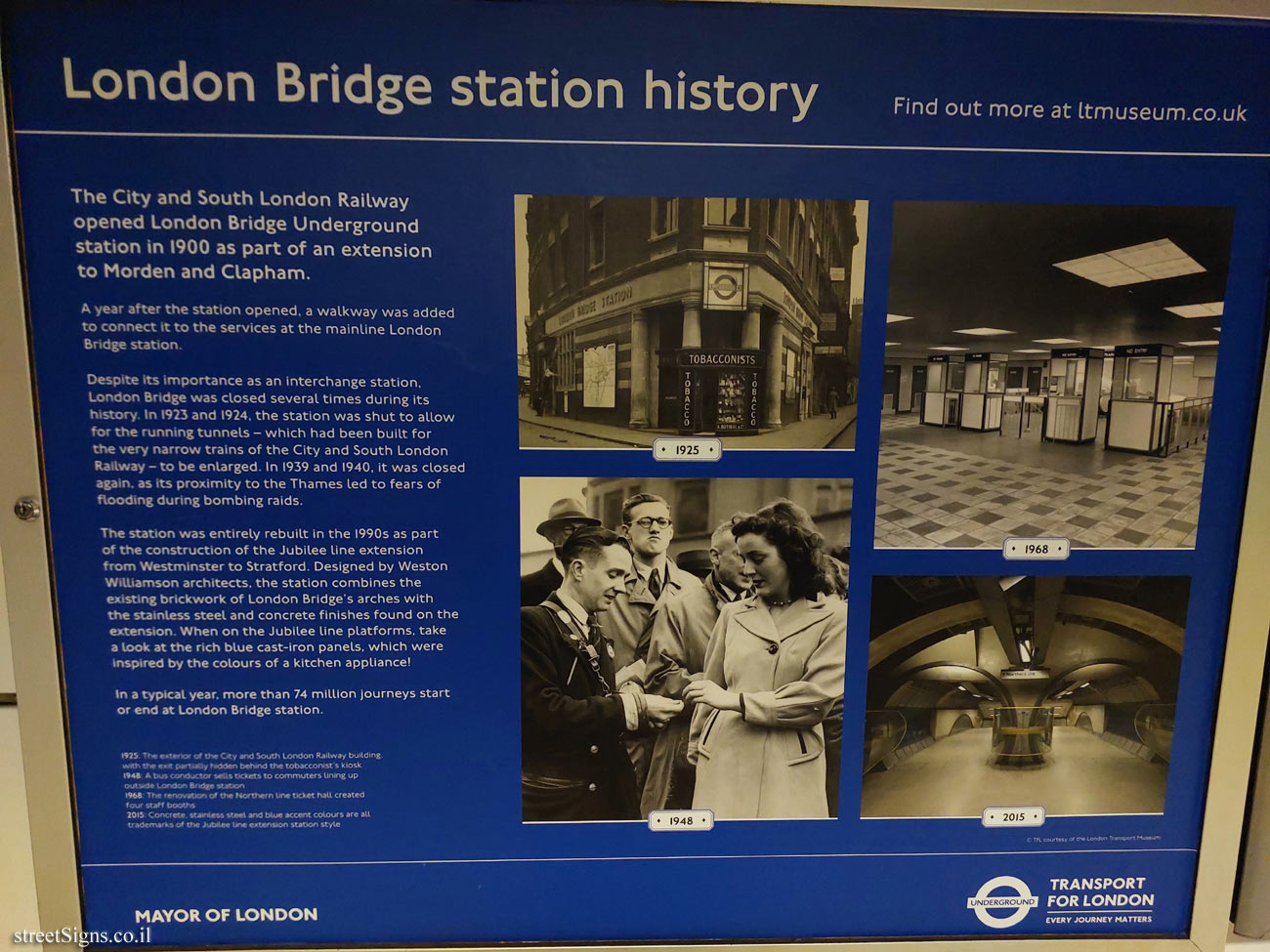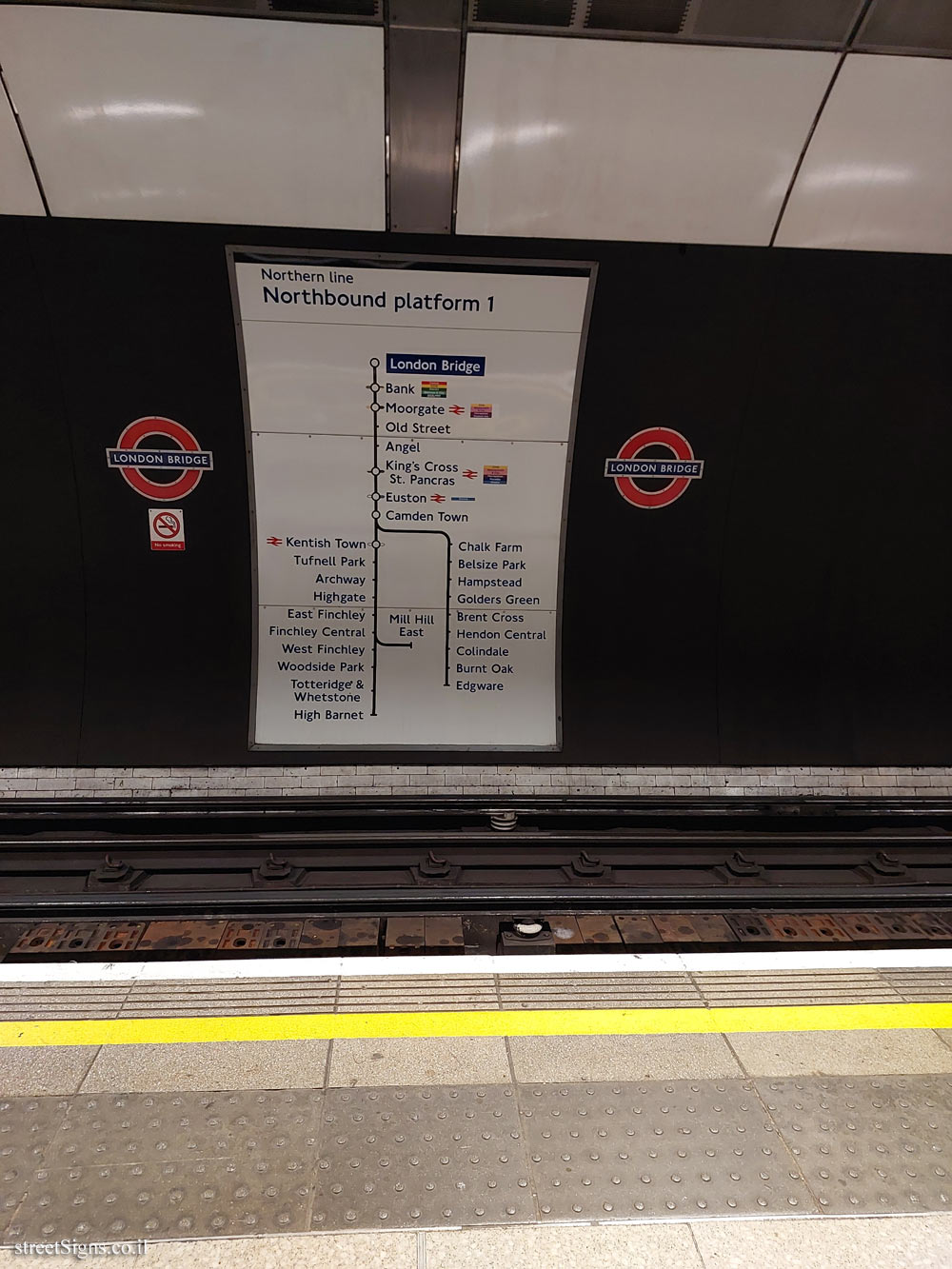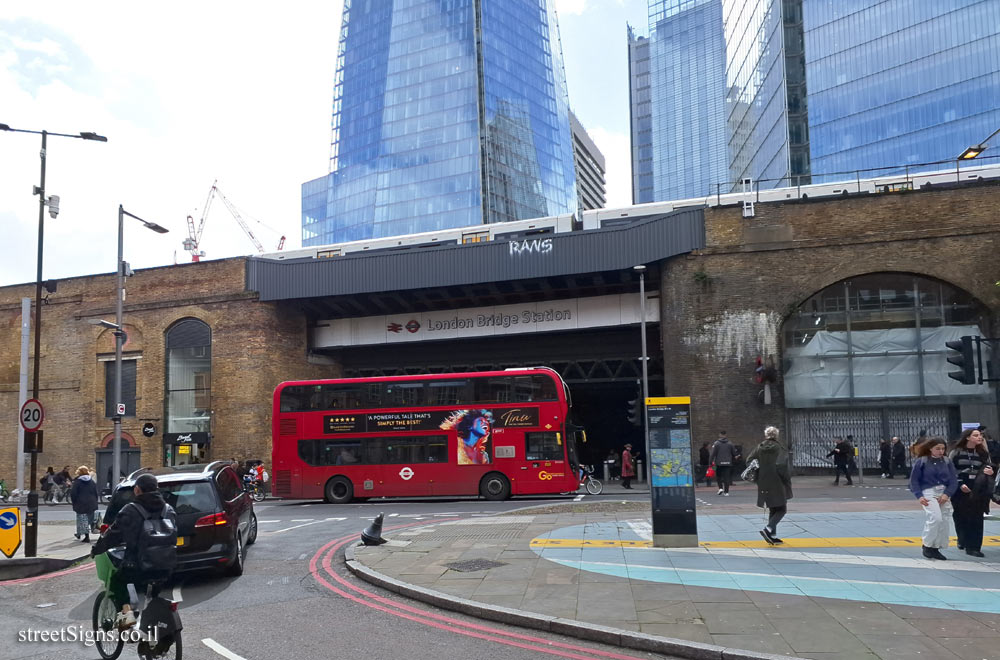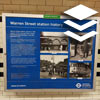LONDON UNDERGROUND HISTORY
London Bridge station history Find out more at
www.ltmuseum.co.uk The City and South London Railway opened London Bridge Underground station in 1900 as part of an extension to Morden and Clapham.
A year after the station opened, a walkway was added to connect it to the services at the mainline London Bridge station.
Despite its importance as an interchange station, London Bridge was closed several times during its history. In 1923 and 1924, the station was shut to allow for the running tunnels - which had been built for the very narrow trains of the City and South London Railway - to be enlarged. In 1939 and 1940, it was closed again, as its proximity to the Thames led to fears of flooding during bombing raids.
The station was entirely rebuilt in the 1990s as part of the construction of the Jubilee line extension from Westminster to Stratford. Designed by Weston Williamson architects, the station combines the existing brickwork of London Bridge’s arches with the stainless steel and concrete finishes found on the extension. When on the Jubilee line platforms, take a look at the rich blue cast-iron panels, which were inspired by the colours of a kitchen appliance!
In a typical year, more than 74 million journeys start or end at London Bridge station.
[Images]
1925: The exterior of the City and South London Railway building, with the exit partially hidden behind the tobacconist’s kiosk
1948: A bus conductor sells tickets to commuters Lining up outside London Bridge station
1968: The renovation of the Northern line ticket hall created four staff booths
2015: Concrete , stainless steel and blue accent colours are all trademarks of the Jubilee une extension station style
MAYOR OF LONDON
Logo of the Underground
TRANSPORT FOR LONDON - EVERY JOURNEY MATTERS
© TFL courtesy of the London Transport Museum


 Click for a larger image
Click for a larger image  Click for a larger image
Click for a larger image  Click for all signs belonging to London Underground History
Click for all signs belonging to London Underground History
 2.21 Km |
2.21 Km |  2.7 Km |
2.7 Km |  2.71 Km |
2.71 Km |  2.76 Km |
2.76 Km |  3.32 Km
3.32 Km